This week on the Memphis Flyer Podcast, we have a special guest. John Doyle of the Memphis Rock ‘n’ Soul Museum joins Alex Greene to talk about moving the museum and the Memphis Music Hall of Fame to Beale Street.
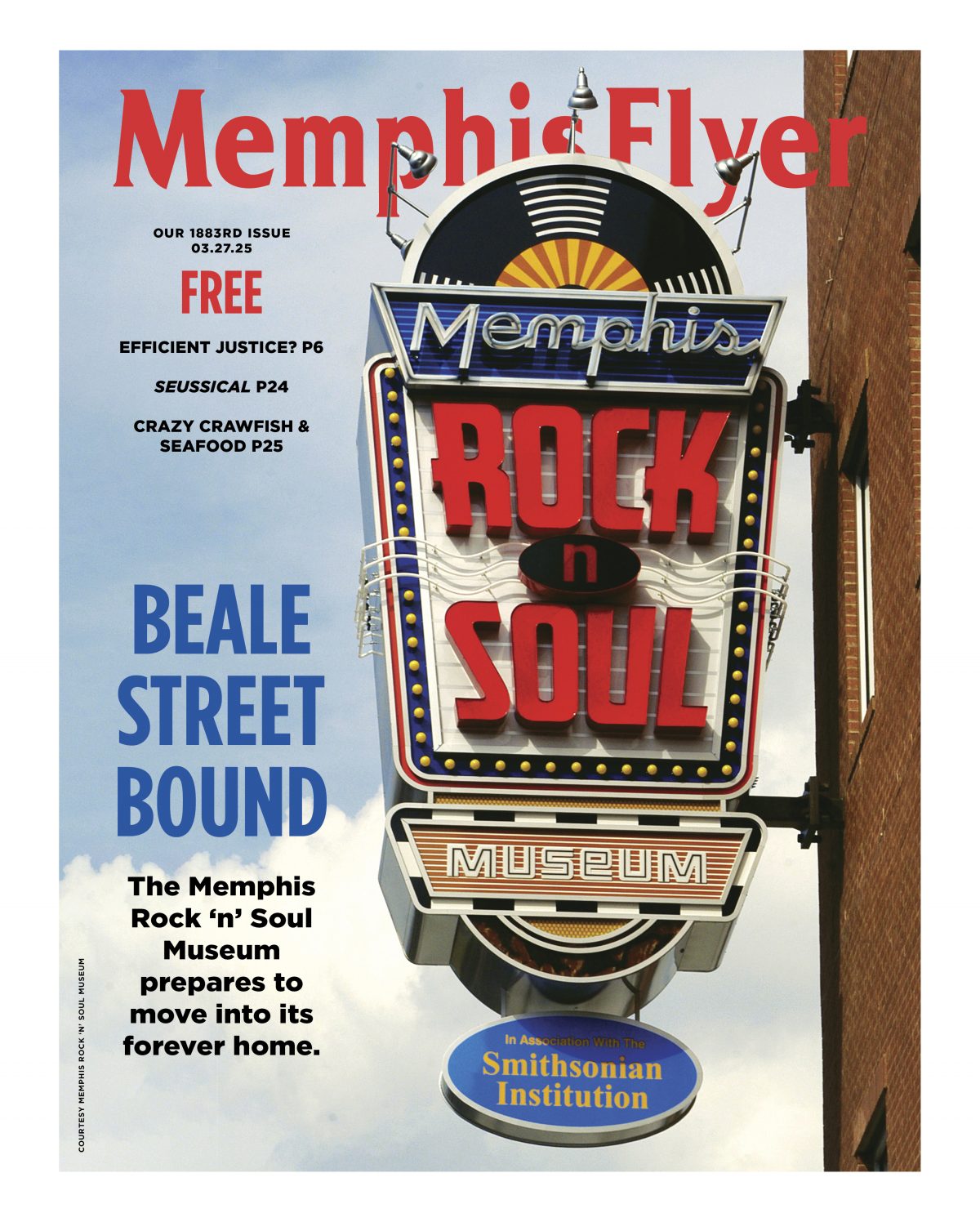

This week on the Memphis Flyer Podcast, we have a special guest. John Doyle of the Memphis Rock ‘n’ Soul Museum joins Alex Greene to talk about moving the museum and the Memphis Music Hall of Fame to Beale Street.
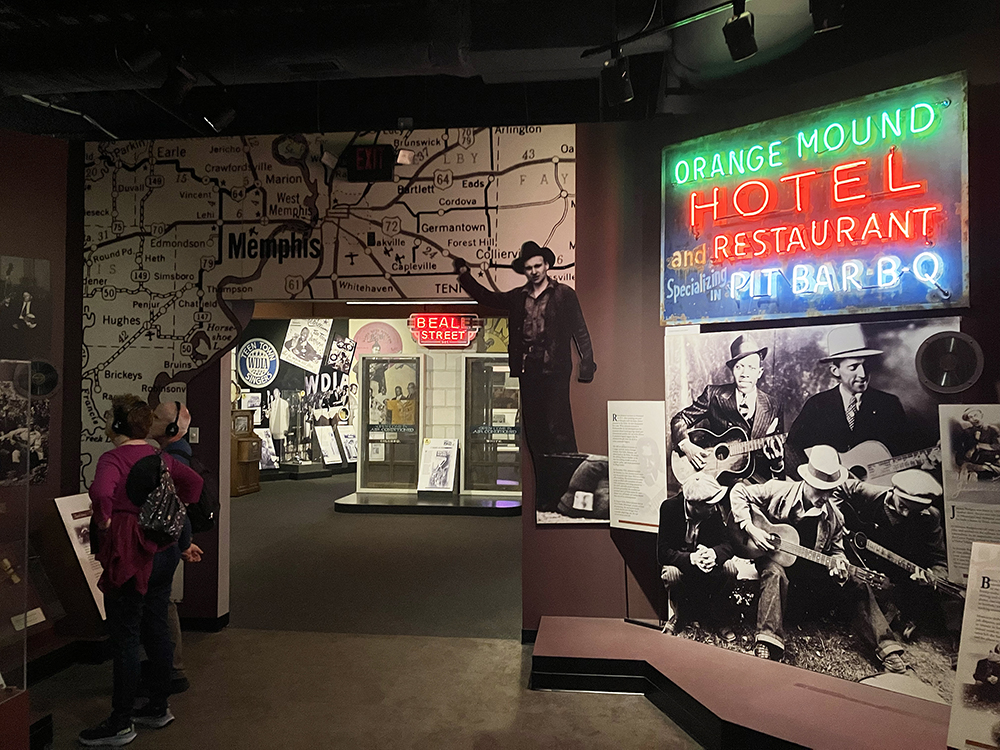
“Would you like to take a look inside?” asks Josh Harper of the Memphis Music Hall of Fame, as I stare at the white and pink letters on a black door, spelling out some of the most revered words in the annals of rock-and-roll fashion: Lansky Bros., Memphis, Since 1946. That’s an offer no inquisitive journalist can refuse, and when Harper turns the key, it’s as if he’s opened a portal into the past. The brick walls of the clothier’s longtime location at 126 Beale Street, now vacated in favor of the newer Lansky at the Peabody boutique, exude an aura of living, breathing history, dating back to the structure’s incarnation as Burke’s Carriages in the early days of Beale.
“The building used to be two buildings that were bricked together,” says John Doyle, executive director of both the Memphis Music Hall of Fame (MMHOF) and the Memphis Rock ‘n’ Soul Museum. “On the second floor, they shoed horses. There was a ramp on the outside of the building where they walked the horses up there. A saloon was on the first floor. And the original hardwood floors are still there; the original beams are still there.”
Doyle has every reason to savor the history of the location, beyond the fact that the MMHOF museum was sandwiched between Lansky’s and the Hard Rock Cafe there for nearly a decade. Helming a museum makes one partial to the legacy of any building, especially when it’s destined to be the home of the very exhibitions you manage. And that’s precisely what’s in store for the Memphis Rock ‘n’ Soul Museum.


A Movable Feast
The move was made public one year ago at a press conference outside the building that featured Doyle, businessman J.W. Gibson, and host Priscilla Presley, where it was announced that Memphis Rock ‘n’ Soul Inc., the nonprofit that operates both the museum and MMHOF, had purchased 126 Beale from Lansky’s for $5 million with funding from Gibson, Mike Curb, and other benefactors. The highlight of the event was the unveiling of a sign marking the address as the new “J.W. and Kathy Gibson Center for Music” that will include MMHOF, Rock ‘n’ Soul, and the Mike & Linda Curb Music Center.
As reported at the time by Bob Mehr in the Commercial Appeal, Gibson, who is chairman of the museum’s foundation board, said, “It’s Memphis music that I’m committed to, and that I think is sorely missing tremendous opportunities year after year. Since I’ve been on the board, I’ve been preaching the notion that we need to take advantage of the talent that Memphis has and the history we have. Memphis music is substantial to the music industry internationally. However, locally, what are we doing to uplift that industry, to support that industry? We saw an opportunity here.”
Naturally, migrating the museum into the space will take some time, but the institution has long had patience on its side. Now in its 25th year, Rock ‘n’ Soul occupies a unique niche in the local museum ecosystem. For one thing, it was launched by the Smithsonian Institution, the first of that venerable organization’s exhibitions to be located outside the Washington, D.C., area. Moreover, Rock ‘n’ Soul was uniquely peripatetic even before it opened, with its origins rooted in a traveling exhibition.
As Doyle explains, “When the Smithsonian was celebrating their 150th anniversary as a museum system, they decided to get some of their stuff out in the world and did an exhibit that toured the country. It included the ruby slippers from The Wizard of Oz, Abraham Lincoln’s stovepipe hat, and other things, but the centerpiece of it was an exhibit about the origins of America’s music. It featured the quote that ‘In the quest to identify the roots of rock-and-roll, all roads led to Memphis.’ And they actually tapped some Memphians to do some of the research. David Less, here in Memphis, who has been head of the Blues Foundation and is a record producer and author, conducted over 60 oral history interviews with Memphis musicians who were still alive at the time.”
That ultimately led to siting the brick-and-mortar Memphis Rock ‘n’ Soul Museum in the Gibson Guitar Factory, a block south of Beale Street, in 2000. But though Gibson was not destined to keep that facility in operation in perpetuity, the museum had already migrated by the time it closed. As it turned out, Gibson wasn’t the only business interested in having a music museum in its corridors. The Grizzlies were coming.
Doyle explains that the NBA team “wanted a music museum to be part of the FedExForum campus because they were theming the basketball arena with a Memphis music thing. Anyone who’s come to a Grizzlies game recognizes that Memphis music is pretty prevalent through there. It was wise on the Grizzlies’ part to really embrace that aspect of the city’s culture. So they wanted a music museum to be part of the campus, and the Rock ‘n’ Soul board and staff preceding me raised, I think, $1.3 million to convert what was going to be a three story building into a four story building, so that Rock ‘n’ Soul would encompass the first floor.”
And that’s where it has stood since 2004, when the FedExForum opened. “We can never say enough about the Memphis Grizzlies. To have a nonprofit museum developed by the Smithsonian Institution, that pays no lease, is pretty unheard of. We’re the envy of most of the nonprofits in the city, and that’s out of the graciousness of the Grizzlies.” Indeed, the museum has thrived there for 20-odd years, and only last month, USA Today included Rock ‘n’ Soul among the top 10 music museums in the country as part of their 10Best Readers’ Choice Awards series. That puts it in the company of the Johnny Cash Museum, the Patsy Cline Museum, and the Country Music Hall of Fame in Nashville; the Rock & Roll Hall of Fame in Cleveland; the Musical Instrument Museum in Phoenix; the Museum at Bethel Woods in Bethel, NY; the Motown Museum in Detroit; the Birthplace of Country Music Museum in Bristol, Virginia; and the Woody Guthrie Center in Tulsa, Oklahoma.
A Weird Coincidence
Thriving as it is in its current location, one might well ask why Rock ‘n’ Soul would move at all. And at one time, several of the museum’s board members were asking the same question. But at least one of them was inclined to think big.
“We had a strategic planning session a few years ago,” Doyle says, “and we were talking about things like improvements to the museum exhibits, expanded programming, and starting an endowment for the longevity of the organization. And then one board member threw up their hand and said, ‘What if we dreamed about having our own building, and both museums being under one roof?’ And another board member said, ‘Are you crazy? We pay no lease at FedExForum, thanks to the Memphis Grizzlies. Over at the Memphis Music Hall of Fame, we pay no lease, thanks to the Hard Rock Cafe [the anchor tenant in Lansky’s building, serving as MMHOF’s landlord]. We would be stupid to do something like that!’”
But even as they spoke, events were coalescing to nudge them out of their comfort zone. As Doyle explains, “It wasn’t two months later that Hal Lansky came into the lobby of Rock ‘n’ Soul and said, ‘I need to talk to you about something. The Hard Rock Cafe is leaving Memphis.’ This was in June of 2023. And I said, ‘When are they leaving?’ He said, ‘Thirty days from now.’ And I said, ‘Are y’all going to get another tenant in there who can serve as landlord for the Memphis Music Hall of Fame?’ And he said, ‘No, probably not. We’re probably going to put the building up for sale.’
“So I went to our board and said, ‘Remember that idea that some of us said was the stupidest idea anyone had ever come up with at a strategic planning session? It looks like it’s coming true.’ And so, with a very visionary board of directors, our soon-to-be board chairman J.W. Gibson donated a million dollars towards the purchase of the building. Then we wrote a grant, and the Assisi Foundation of Memphis graciously donated a million dollars. And then Mike Curb with Curb Records, who owns Elvis’ home on Audubon and funded the [Mike Curb Institute for Music] at Rhodes College, stepped up with $2.5 million, and in eight months, we purchased the building.”
That was just the beginning, of course. Expanding and creating new spaces for public engagement will incur costs far beyond the purchase of the building itself. “We then started a capital campaign to raise another $15 million to renovate the building, to do upgrades to both museums’ exhibits, to make them bigger and better, to have a performance space, so that we can assist musicians, to have a studio, so that we can assist students, and grow the gift shop. And now we have that underway. It’s kind of a surreal moment.”
Furthermore, both Rock ‘n’ Soul and MMHOF will live together in a space that’s undeniably, inherently historical. As Doyle points out, that’s something that other Memphis music tourist destinations have that Rock ‘n’ Soul has never possessed. “There’s only one place where you can have Sun Studio. The Stax Museum [of American Soul Music], even though the building was demolished, they rebuilt a replica on the same site. And then obviously, you can’t move Graceland. The fact that we tell the complete Memphis music story separates us somewhat from our other partners in the field of music here, around Memphis.” Yet that has also meant that Rock ‘n’ Soul has lacked any obvious, charmed location. But that’s about to change.
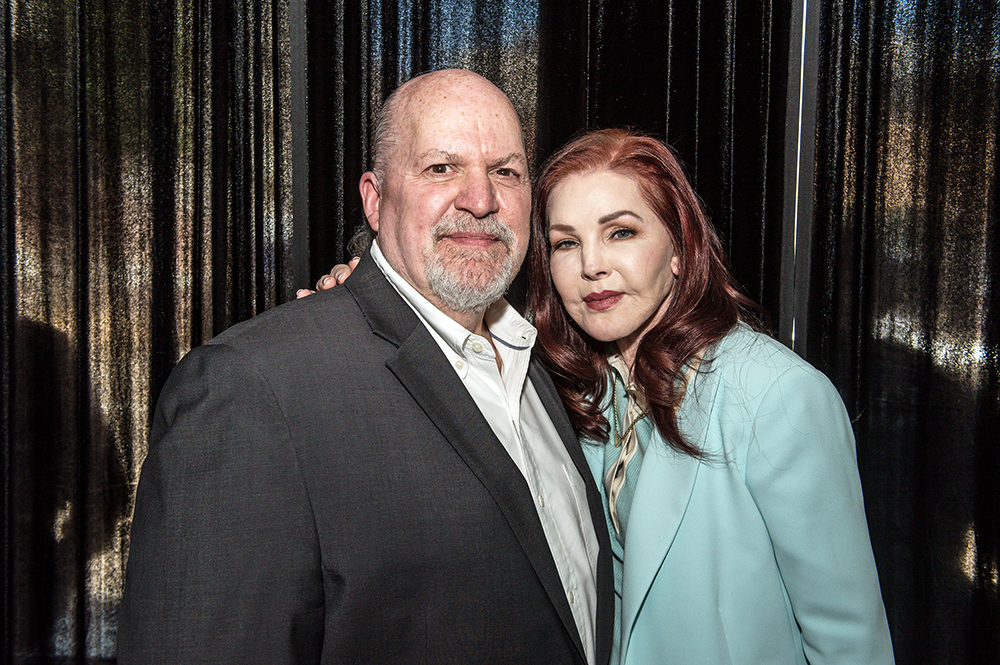
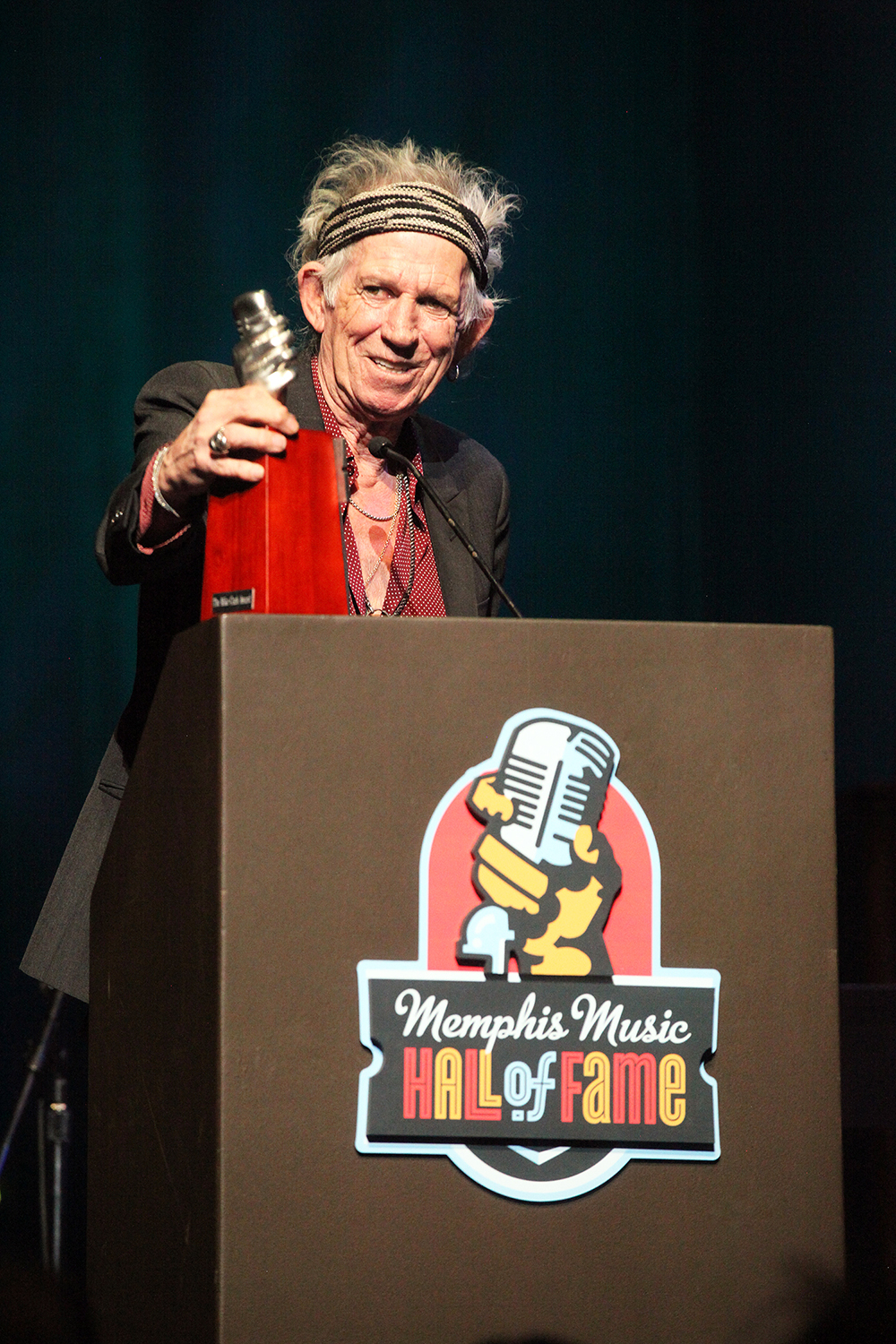
Sacred Ground
Although Rock ‘n’ Soul won’t move for another year or two, the upcoming location is already spurring on a new groundswell of support for the museum. As it turns out, there’s nothing like having a Beale Street address. “Priscilla Presley is very engaged about what we’re doing,” says Doyle. “She’s obviously engaged because Elvis was tied to that building. But she also considers Memphis home, despite the fact that she lives in Los Angeles — as she’s said, she lived at Graceland longer than she lived anywhere in her life, being a military brat. And so she’s gone with me twice to the State Capitol to talk to legislators and the governor about how important this is, not just for the Rock ‘n’ Soul Museum, but for Memphis music and for the future of Beale Street, the safety of Beale Street: to have daytime and family-friendly programming, to enhance what the clubs and restaurants are doing. We’re looking forward to working with the Beale Street merchants, to be a good partner there, even though we’re on the other side of Second Street from the Beale Street Historic District.”
Mike Curb, for his part, also sees the move as potentially creating a critical mass around Beale Street. “We’re kind of hoping to do on Beale Street what we did in Nashville’s Music Row, where we bought quite a few buildings. … We’re going to do something really special.”
A whole new world of possibilities is opening up, in part because of a significant increase in square footage, but also because of what the Hard Rock Cafe left in its wake. “Fortunately, when Hard Rock Cafe left town,” says Doyle, “they left every plate, every fork and spoon, the most incredible kitchen equipment you’ve ever seen, and a stage with full sound equipment, full lights. Everything was left for us. I guess it was a housewarming gift. And we have great space in the building, double the space that we currently have for our two museums’ exhibits, so we could make room for a performance space, a larger gift shop, a recording studio to help students with podcasts, and host Beale Street Caravan, that sort of thing. We can have summer camps for kids, music performances, private facility rentals, anything that you want in that space, and still keep the museums running. This building is going to afford that.”
Naturally, putting the museums at the head of the entertainment district will make them both more visible, and, together under one roof, able to attract more visitors. Most of all, they will be both on and of Beale, the old carriage shop’s brick walls, where a saloon’s rowdy crowd once fought, courted, and raised toasts, exuding the street’s spirit. Within those walls, Rock ‘n’ Soul and MMHOF will embody the very history they celebrate. As Doyle puts it, “Those are the things that make us sacred. We are moving into sacred ground.”
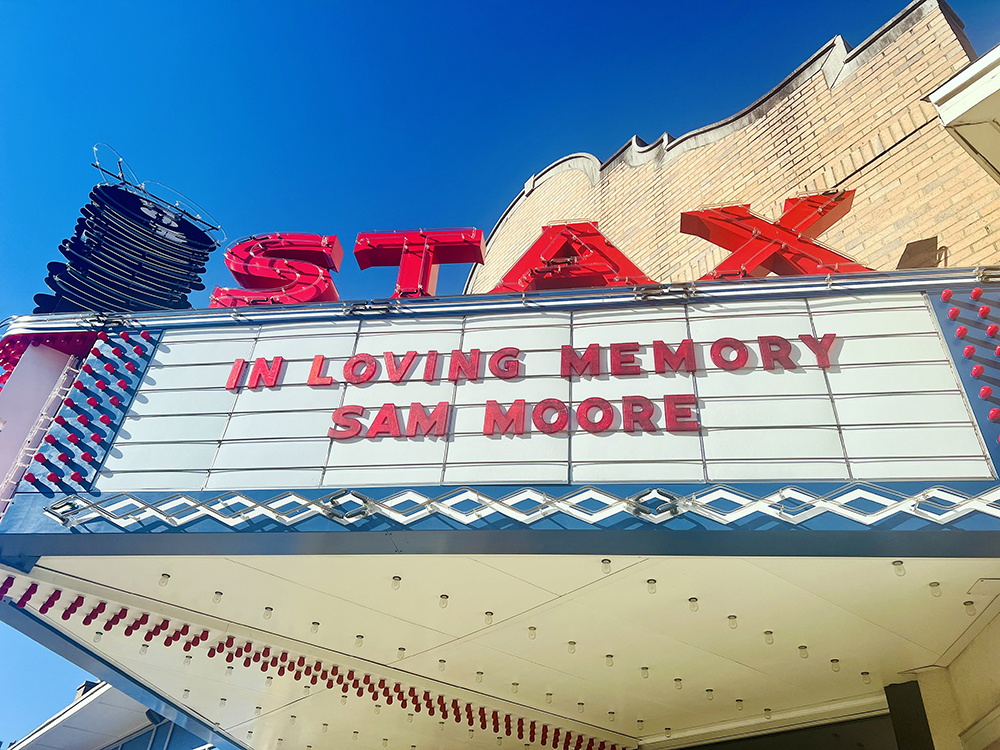
Back during the initial flowering of Stax Records, as the label went from success to success in its first half-dozen years, and all its rooms buzzed with an ever-expanding staff trying to keep up with popular demand, one star in particular had a tendency to saunter away from the studio, where the action was, and take a detour down Stax’s back hallways from time to time. Deanie Parker, one of the label’s first office employees who soon became their lead publicist, remembers it well — that’s where she worked.
“Every now and then, he just walked in the door,” she recalls a little wistfully, “with little gifts for the girls in the office, little packages. That’s the kind of person he was.”
Now, scores of mourners will be sending flowers to that same soul singer, Sam Moore, the high tenor partner of Dave Prater in Stax super duo Sam & Dave, who died at the age of 89 on January 10th in Coral Gables, Florida, from post-surgery complications. This week, we pay tribute to the great Sam Moore by revisiting the pivotal role he played in the history of Stax and all soul music, as remembered by two who were right there with him: Deanie Parker and David Porter.
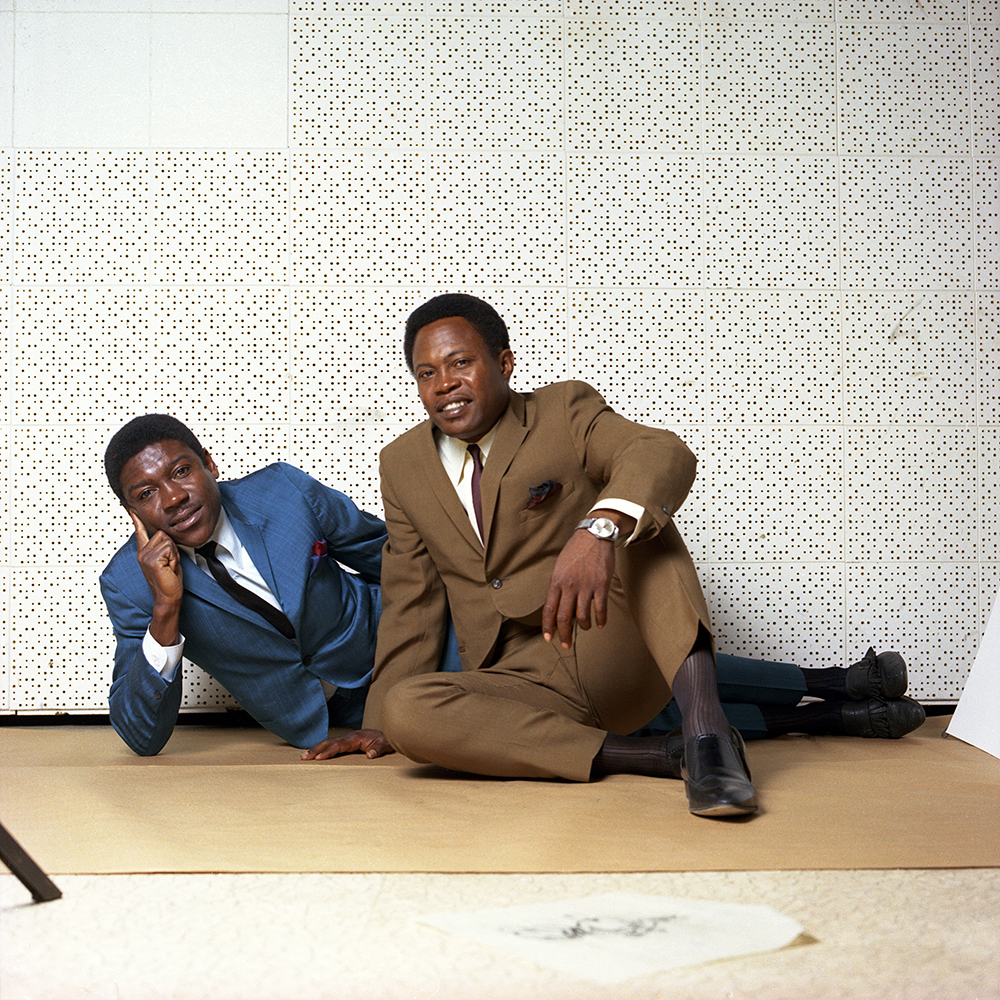
Sam Moore: The Stax Years
The quieting of one of soul music’s most expressive voices sent powerful shock waves throughout the music world — certainly among his late-career collaborators like Bruce Springsteen, but not least in Memphis, where Moore and Prater, singing the songs of Porter and Isaac Hayes, helped bring the Stax sound to its fullest fruition in the mid-’60s, becoming overnight sensations with hits like “Hold On, I’m Comin,’” “You Don’t Know Like I Know,” “I Thank You,” and “Soul Man.”
Even then, “Sam Moore got along especially well with the administrative staff,” says Parker, recalling those spontaneous gifts. “He was the most gregarious of the duo. He was a great conversationalist and very personable. Dave was rather laid-back, kind of quiet.
“Keep in mind, now, that I was not in the studio with him all the time because I was in administration,” Parker goes on. “But because of our proximity to each other, it gave me an opportunity to get up and, when the record light was not on in Studio A, go in and observe and listen — not only to their rehearsals, but to the final takes and the playback.”
Surely anyone at Stax was rushing down the hall to hear the hot new duo’s latest, once the hits were hitting, for they were taking the Stax recipe to a whole new level of artistry. Yet while those songs are now part of the Stax canon, the definitive statements of the Memphis Sound, the success of two newcomers named Sam & Dave was not a foregone conclusion when they arrived.
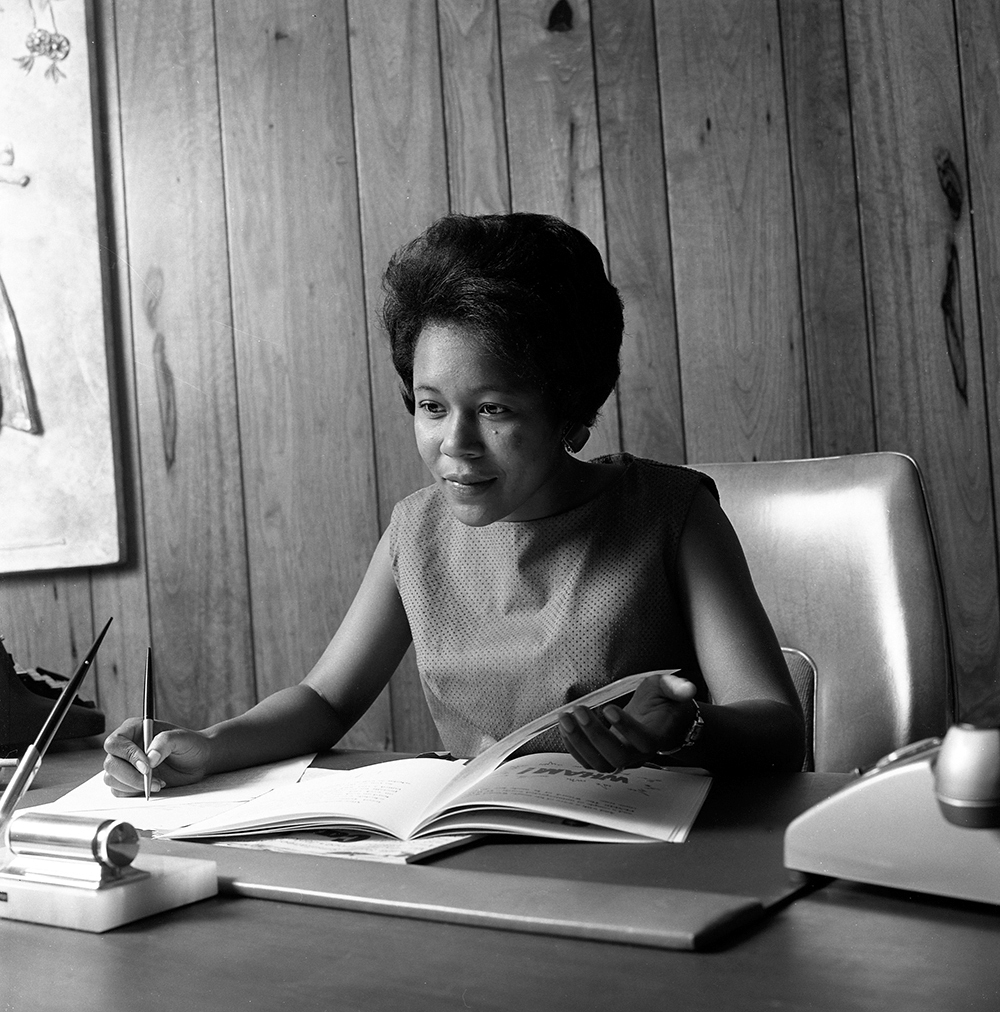
Newcomers
“There was no one interested in Sam & Dave,” songwriter David Porter told Rob Bowman in the liner notes for The Complete Stax/Volt Singles: 1959-1968. “It was like a throwaway kind of situation [to] see if anything could happen with them.” Indeed, it seemed no one at Atlantic Records, who had a distribution deal with Stax, knew what to do with this singing duo from Florida, who’d had little luck with their scattered singles on the Marlin, Alston, and Roulette labels. Despite this, said Porter, “I was very much interested in Sam & Dave.”
But were Sam & Dave interested in Memphis? Atlantic had “loaned” the duo to the smaller label that was showing so much promise, but in 1965 Stax was hardly a household name. Moore’s reaction, according to Parker, was, “Who wants to go to Memphis?” Moore had his sights set on crossover pop stardom in the Big Apple, not moving to what seemed like a backwater. “He really did not have a positive impression about Memphis,” Parker says. “And apparently he was not all that familiar with Stax, which stands to reason, because when Sam & Dave got here, we only had a couple of stars. We just had Rufus and Carla, Booker T. and the M.G.’s, the Mar-Keys, and Otis [Redding]. I don’t know that we had more than those in the category of the top stars.”
Moore himself described the situation hilariously in his acceptance speech for Sam & Dave’s induction into the Memphis Music Hall of Fame in October 2015. “When Dave and I first came to Memphis,” Moore recalled, “the first person I saw was David Porter. He had on a small hat, a big sweater, and his pants looked like pedal pushers. Water came into my eyes.” Moore paused for laughter with impeccable comic timing. “Then it got worse: I saw Isaac. Isaac had on a green shirt with a low-cut neck, like that, a white belt, chartreuse pants, pink socks, and white shoes. I started crying harder. I wanted to go home.”
There must have been more than a little truth to that, for, as Moore went on to explain, “I had in mind to sing like Jackie Wilson, James Brown, Wilson Pickett … but then they introduced us to these two guys and we went inside and they introduced us to the songs. And they didn’t sound nothing like Jackie Wilson and all these people! And then I turned to Dave … and he was trying to get a phone number to get to the airport.
“Being the new kids on the block, we had nothing to say. So we had to go on in there.”
In fact, they were walking into the Stax brain trust, which had always dared to be different. When Sam & Dave’s pre-Stax singles tried to emulate the more polished soul of Wilson or Sam Cooke, albeit without their orchestral flourishes, the results came off as rather corny. Now it was 1965, and pop music was getting edgier, from Bob Dylan’s “Like a Rolling Stone” to the Rolling Stones’ “(I Can’t Get No) Satisfaction.” Even James Brown, whose biggest hits had been ballads like “Try Me,” was cooking up material like “Papa’s Got a Brand New Bag.”
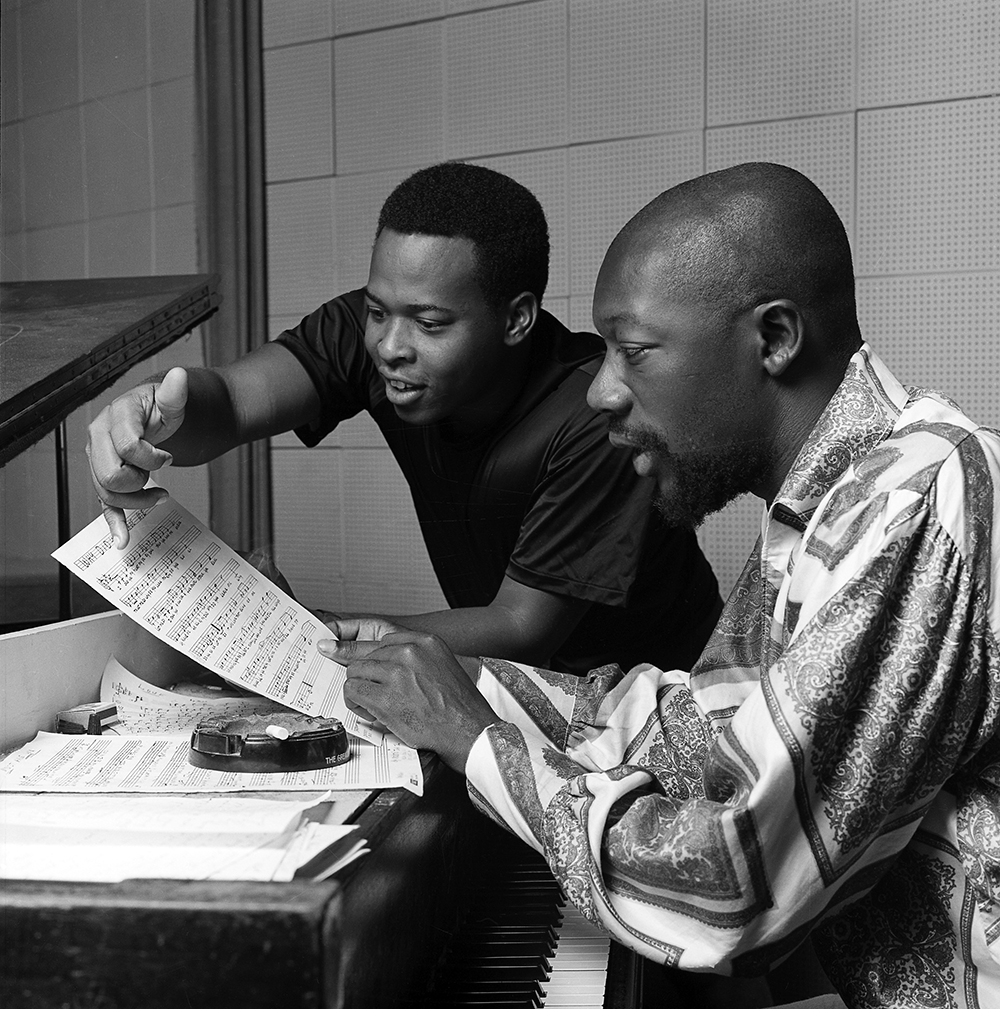
Dream Team
David Porter, who saw their potential early on, inched them toward a rawer take on soul music when he penned the shuffling, feel-good “A Place Nobody Can Find” for them, though the B-side, written by Porter and Steve Cropper, was a more tender ballad, with sassy horns thrown in for good measure. Unlike their later hits, Prater was given the lead vocal, though Moore’s upper register parts hinted at the harmonies that were to come. It wasn’t until their next single that Porter and Hayes teamed up to produce the duo, and their nascent songwriting partnership blossomed. And they gelled not only in the substance of the songs, with Porter crafting lyrics for Hayes’ music, but in the strategy they mapped out for the two new kids on the block.
Reflecting on that strategy today, Porter says that Sam & Dave “didn’t have a concept as far as the artistic direction that they needed to go. That’s why Jerry Wexler, the president of Atlantic Records, brought them to Memphis, in hopes of finding whatever that was — he didn’t know what it was. But we had our concept of what we wanted to do, and that was to bring it out of the church, the spirituality out of the church, and have the music emphasize what we called the low end of it, the bass, drums, and guitar, and the underlying chord progressions in the low end, paired with the gospel persona of it, the spirituality of the church.”
And yet, as with Ray Charles and so much of the finest soul music, the gospel underpinnings supported very secular, worldly sentiments. Lyrically, Porter paired the world of the bluesman with the spirit of church. And that came as a shock to the singers, who had both grown up singing in church choirs.
“David Porter and Sam could clash,” Parker recalls, “but it wasn’t hostile, and it didn’t last but a few minutes. It was like they were sparring, you know? Of course, Isaac’s thing was the keyboard, he was the melody man, and Porter was the lyricist. And sometimes Porter had to stop and help both of the guys understand what he meant when he wrote, ‘Coming to you on a dusty road.’ You know what I’m saying? Because this was not Sam & Dave’s environment. This was David Porter’s environment from the area around Millington, Tennessee.”
And so a great foursome was born, beginning with the single “I Take What I Want,” which, as Bowman notes, “was to provide the model for the majority of Sam & Dave’s Stax 45s.” By the time “Hold On, I’m Comin’” dropped in March of 1966, topping the R&B charts and reaching number 21 on the pop charts, that model was locked in. After crafting a song and a sound, Porter and Hayes would only need to give the duo a brief rundown before they got it. Porter can still picture it today: “I’m standing there with them, and I’m looking at them as I give them the lyric sheet. We go through the melody at the piano, and then by the time they get on the microphone, they go into another world. They made it their own, and that’s when you know you’ve got something special.”
And so, even if “Sam was the dominant one,” as Parker recalls, and more prone to pushback, both Sam and Dave were consummate professionals. “We had to go on in there,” as Moore recalled, and they did.
Porter says, “There never was a comment like, ‘Well, I don’t want to do that song. I don’t like that song.’ Because we produced the albums, even when we were doing a song by some other writer, and on occasion we would do that, they still didn’t object. They would bring their own spirit and commitment to wanting to make it as good as it could possibly be. And they did that.”
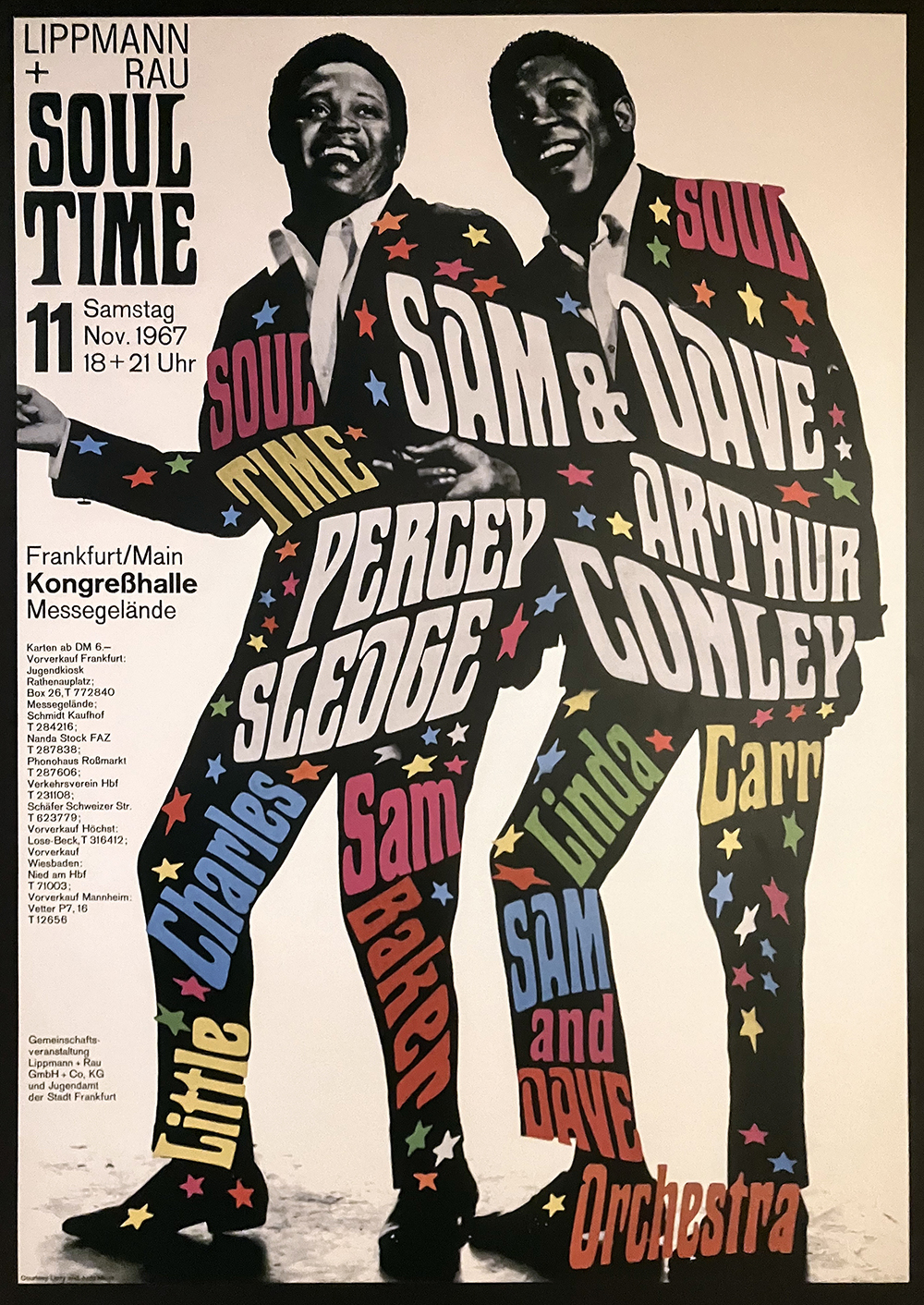
The Key to the Speedboat
The foursome’s recipe for success not only gave Sam & Dave’s career a boost; it solidified Stax’s standing as a label. As Robert Gordon writes in Respect Yourself: Stax Records and the Soul Explosion, “their album Hold On, I’m Comin’ proved to be the breakthrough for Stax’s album sales. In all the company’s years through 1965, they’d released only eight albums. … In 1966 alone they released eleven albums and Sam & Dave’s Hold On went to number one on the R&B album sales chart. Albums were good business.”
Parker likens it to the fledgling label acquiring a sleek new machine. “They reminded me of a speedboat,” she says. “A boat that nobody was 100 percent familiar with because they were not on the water in the speedboat every day. They had to figure out a lot of things mechanically, and they had to become acquainted with each other. And I’m talking about Sam and Dave and David and Isaac. Once Sam and Dave found their groove with David and Isaac, it was like they had found the key to speedboat. They then began to realize that they had more going for them with their new producers than they’d ever imagined.”
If the speedboat was designed by the producers, Porter makes it clear that Sam & Dave supplied the spark of ignition. “You, as a creator, can create something that you know is strong and good, but when you have an artist that’s able to create their own individuality through the spirit of what you’ve done, then you’ve got something special. That’s the thing that made Sam Moore such a special talent, as well as Dave: They would go into the ownership of the message. I would tell them where the vibe was, and they would have to live the spirit of the message. That’s where true artistry comes in. And the more songs we wrote for them, the more comfortable they would get into doing it.”
Or, as Porter wrote on social media after Moore’s death, Sam & Dave “were always filled with passion, purity, individuality, and believability, grounded in soul.”
The road grew dustier and rockier as the years rolled on, with Atlantic claiming ownership of all Stax masters prior to 1968, and taking Sam & Dave away from Memphis. The duo never reached the heights of their Stax records again, and split apart as Moore struggled with addiction through the ’70s. Yet, with the help of his wife Joyce MacRae, whom he wed in 1982 and who now survives him, he kicked drugs (coming to support several GOP candidates along the way) and revived his career without Prater (who died in a car crash in 1988).
By the time he spoke to the Memphis Music Hall of Fame 10 years ago, Sam Moore had fully embraced his Stax past. “Coming from a humble beginning, with no formal training in singing or anything, we were just two guys who got out there and took the church with us, like Al Green did. … I’m going to say this to you: Thank you Memphis people, the band, the friends that Dave and I met all those years. …They believed in us. They stuck with us. Every record company that we had been with just didn’t know what to do with us. Sixty years later, I’ve been doing this. I’m blessed.”
Sam Moore knew he’d helped build something for the ages. As David Porter reflects now, “The music that was done by the four of us together will live on forever. There’s no doubt in my mind.”
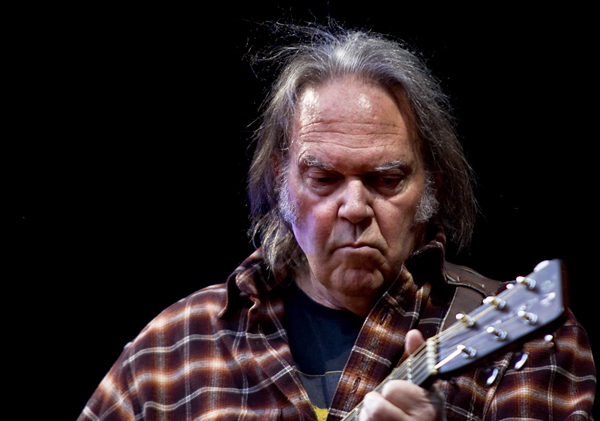
The 2024 Memphis Music Hall of Fame (MMHOF) Induction Ceremony this Friday, September 27th, was already going to be lit. With the likes of garage boppers The Gentrys, soul men supreme James Carr and Wilson Pickett, and hip-hop producer/rapper Jazze Pha being saluted, the music was guaranteed to be stellar.
But at a ceremony of such historical importance, it’s not just about the performances. Simply having the honorees together in the Cannon Center for the Performing Arts is significant, especially if they are expressing their mutual admiration. And it’s in that spirit that Friday night will suddenly be a lot more stellar, as Neil Young has announced that he’ll be there to induct a legendary player he’s worked with for decades: Dewey “Spooner” Lindon Oldham Jr.
Singer, keyboardist, and songwriter Oldham performed with Young at this weekend’s Farm Aid, but his association with the Canadian folk rock innovator goes back much further than that. He played on Young’s celebrated 1992 album Harvest Moon, appeared in the concert film Neil Young: Heart of Gold, and joined Crosby Stills Nash & Young on their 2006 Freedom of Speech tour. He’s also played in two of Young’s occasional touring bands, The Stray Gators and the Prairie Wind Band.
Oldham’s track record, of course, goes way beyond that. Known for his command of the organ and the Wurlitzer electric piano, he recorded in Muscle Shoals, Alabama, at FAME Studios as part of the Muscle Shoals Rhythm Section in his early years, playing on such legendary tracks as Percy Sledge’s “When a Man Loves a Woman”, Wilson Pickett’s “Mustang Sally,” and Aretha Franklin’s “I Never Loved a Man (The Way I Love You).” Later Oldham followed Dan Penn to Memphis, working at American Sound Studios as well as in Muscle Shoals, and co-writing hits by the Box Tops, James and Bobby Purify, and Percy Sledge with Penn.
In all, The Memphis Music Hall of Fame will be inducting and honoring nine inductees this year, who will thus expand the Hall of Fame roster to over 100 world-changing Memphis music icons. In addition to Oldham, this year’s inductees include Carr, Pickett, Jazze Pha, and The Gentrys, as well as operatic soprano Kallen Esperian, background singers Rhodes/Chalmers/Rhodes, Memphis Tourism CEO Kevin Kane, and Jack Soden, CEO of Graceland for more than 40 years.
The 2024 Memphis Music Hall of Fame Induction Ceremony will be held Friday, September 27th, at the Cannon Center for the Performing Arts at 7 p.m. Tickets are available at Ticketmaster (ticketmaster.com) and the Cannon Center box office.
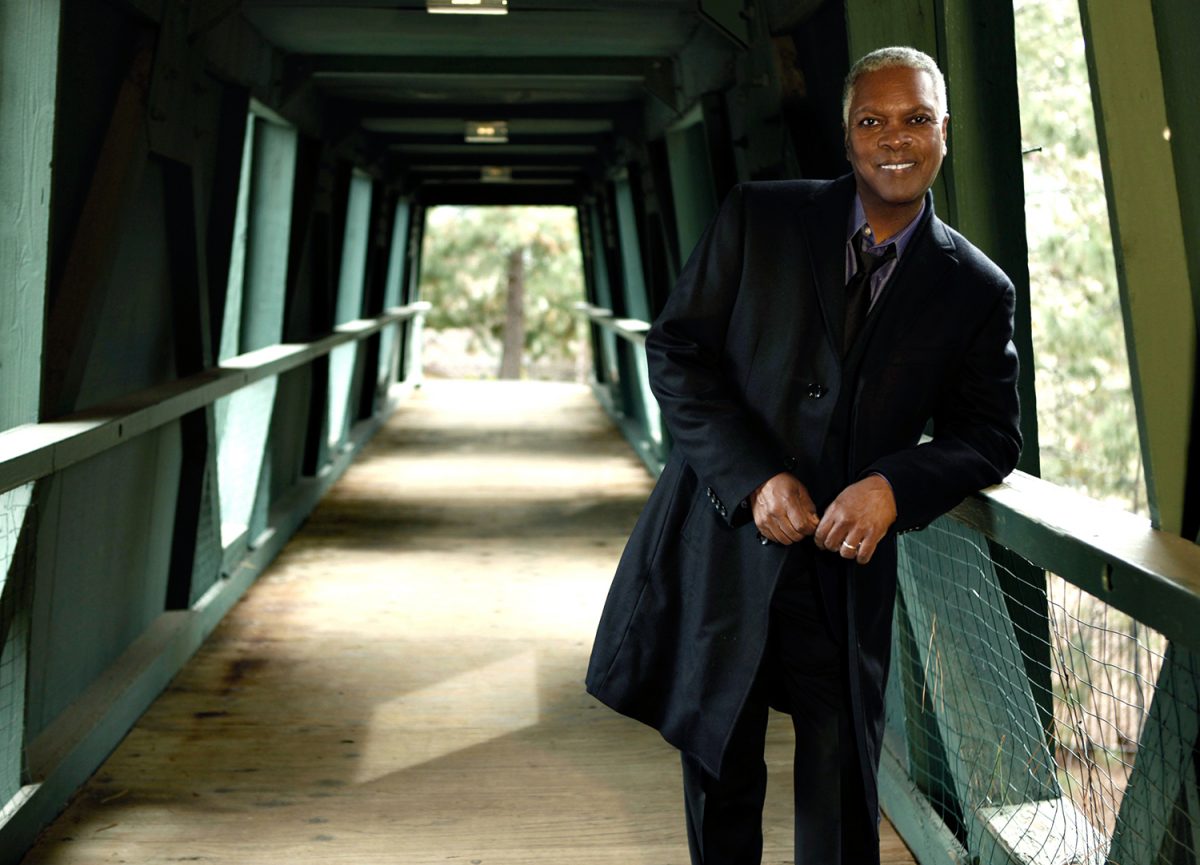
Booker T. Jones is such an iconic Memphian that he’s still identified with his hometown a half century after moving to California. And, that relocation notwithstanding, he’s an enthusiastic advocate of all things Memphis, including the Memphis of his youth, and the supportive community he continues to find here today.
So, it’s wholly appropriate that Jones will be inducted into the Memphis Music Hall of Fame (MMHOF) on Thursday, September 15th. While Booker T. & the MG’s were inducted as a group in 2012, this year’s honor will serve as a recognition of Jones’ accomplishments as an individual, outside of that seminal band, including the many songs he’s penned, recorded, arranged or produced since leaving Stax Records. As such, it’s as much a recognition of the California Jones as the Memphis Jones.
Jones will be performing at Thursday night’s ceremony. In addition to Jones, the 2022 inductees include the late blues and jazz saxophonist, composer, arranger, and educator Fred Ford, Grammy-winning producer and engineer Jim Gaines, American Sound Studios keyboardist, singer, and Grammy winner Ronnie Milsap, former chair of Elvis Presley Enterprises Priscilla Presley, Sun Records artist, songwriter, and producer Billy Lee Riley, Stax artist and Grammy-winning soul giant Mavis Staples, and the iconic drummer for Jerry Lee Lewis and other Sun artists (as well as singer and producer) J.M. Van Eaton. Gaines, Jones, Milsap, Presley, and Van Eaton are all scheduled to attend, while local favorites Reba Russell and John Paul Keith will also perform.
All in all, very good company for Booker T. Jones. Anticipating his imminent homecoming, Jones recently spoke at length with the Memphis Flyer from his home in northern California. Only one day after a mass shooter terrorized the city, our hearts were heavy, yet Jones helped put the day’s events in perspective.
Memphis Flyer: How strange that Memphis is in the headlines for its crime, just when you’ll be coming here to celebrate its positive, musical side.
Booker T. Jones: My condolences to the families. And I hope everybody does something positive in the wake of that. Do something nice for somebody, or for yourself. Try to do something that’s the opposite of that negative energy. Something positive. It’s a huge tragedy.
I was just thinking how appropriate your song, “Representing Memphis,” featuring Sharon Jones and Matt Berninger, is at this moment. It really celebrates the neighborhoods, sights, and sounds of the city.
Well, it’s good to mention Sharon’s name. She was one of the most positive people I’ve known. It was wonderful meeting Sharon. She’s from Brooklyn, I think. She was a very neighborhood-friendly type of person.
“Representing Memphis” also featured Matt Berninger on vocals.
Yeah, he’s another good friend of mine. He’s in a band called The National.
Since you moved to California 50 years ago, it seems you’ve done one collaboration after another.
Yeah. Of course, I miss Memphis. I wouldn’t have been able to go to California if Memphis hadn’t been so good to me. I have a lot of friends there. I’m coming there in a few days, and it’s going to be great to see my family. My family’s from Red Banks, Mississippi and Holly Springs, Mississippi, and they’re all coming. So, it’s going to be great.
How does it feel to return to the Stax building?
I tell you what, Alex: That is hallowed ground. It just is. I remember when I went back a few years after they had torn down the building, and I picked up some bricks and brought them back to California. Because when you walk in the area of 926 East McLemore Avenue, it’s just great. That’s an indication of the spirit of Memphis. It’s all over that town.
It seems you’ve become more appreciative of Memphis in recent years, more so than in the ’70s and ’80s.
That’s true. I have embraced it more, emotionally. Intellectually, I’m maturing. I’m 77 years old. Hopefully I’m maturing somewhat. And just realizing and recognizing who I am and where I come from.
You even named your new record label after the street you grew up on… Edith Street.
Yeah, that’s where it started. That’s another place that’s emotional for me to go back to.
Being inducted into MMHOF apart from the MG’s must be very meaningful to you, after your struggle to get more recognition as an individual before you left Stax.
It is, it’s a really big deal to me. I owe so much to so many people in Memphis who gave me so much at such a young age. And I had so many mentors. And there was such a spirit of giving in my community. In the music community at school, at church, in the neighborhood. So I’m a result of that giving. And it’s a lesson to me. I’m just very fortunate.
It’s ironic, maybe that spirit of giving and support also gave you the strength to break away from Stax.
Yeah, it definitely was a positive/negative, yin/yang type of thing, and of course as soon as I got to California, I had other mentors. Namely Quincy Jones, who was right there, introducing me to this kind of music, that kind of music. And I was immediately surrounded by other mentors. Herb Alpert and so many others. But a lot of kids don’t get a chance to do that. They don’t have a recording studio around the corner from their house. They have to go to Nashville or New York or Los Angeles if they want to be in music. So, I was fortunate that I was born right there in Memphis with a studio three blocks away.
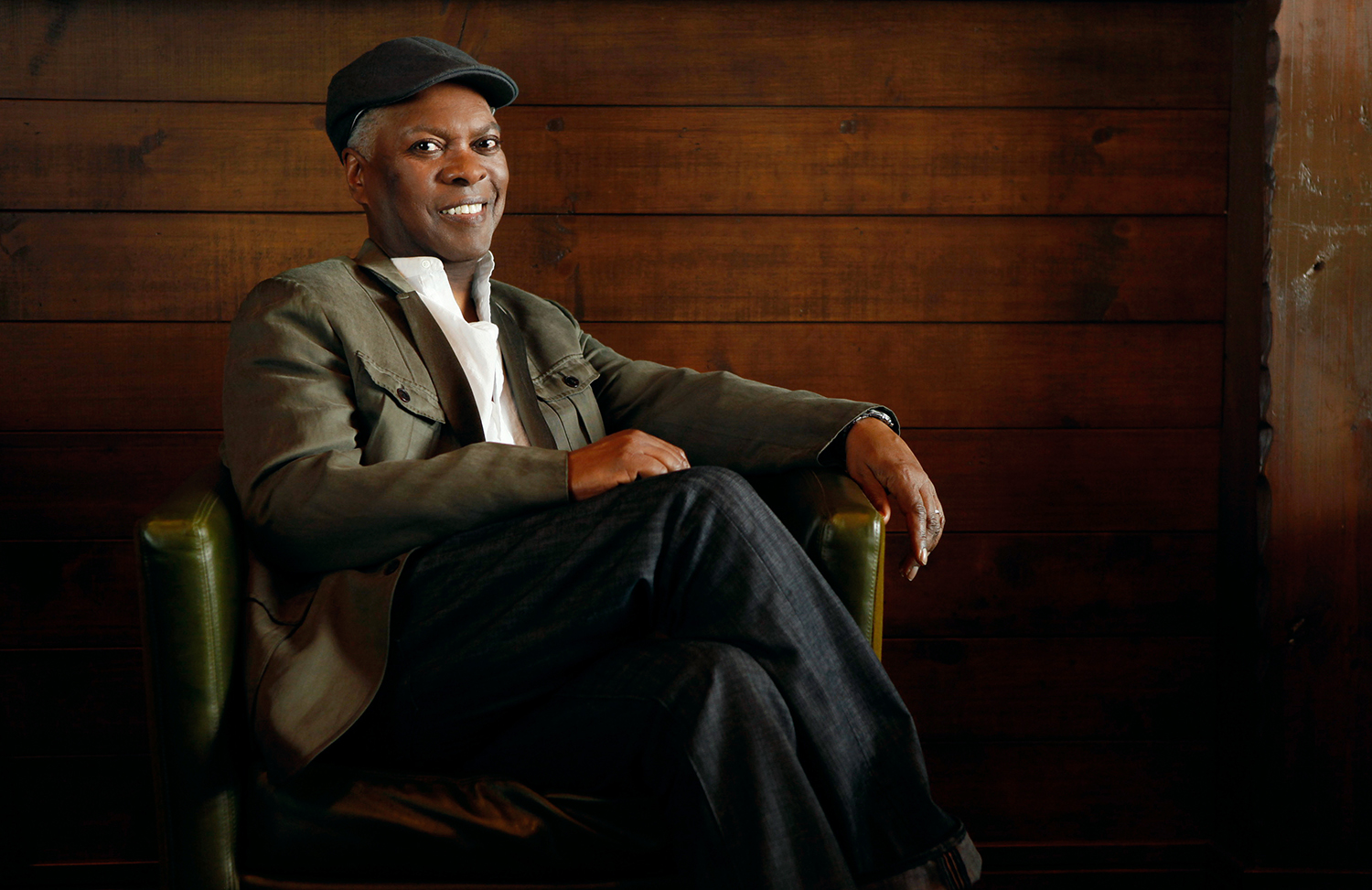
It’s interesting that you mention Quincy Jones. I saw a documentary where you spoke about one particular moment, hearing Ray Charles’ “One Mint Julep” on the radio, which led you to pursue the Hammond organ.
That was the moment. I was on McLemore Avenue, listening to the radio, and I was thinking ‘Oh, what great horns!’ And then I heard the organ and thought, ‘Wow, that’s such a cool sound!’ It wasn’t a sound you heard very much. And I thought if I could just do that, I’d be happy. And I am happy. And it was Quincy’s band on that record. Quincy wrote the arrangements, and Ray was actually a saxophone and organ player in Quincy’s band. Quincy was the man who put all that together.
It was kind of coming full circle, when you connected with him personally later in life. That must have meant a lot.
Yeah. He was a mentor. And he was one of those guys like Willie Mitchell. Willie would take young guys like me and put them up on stage and just try them out. That’s what he did with Mabon ‘Teenie’ Hodges, who was a good friend of mine. Willie did that with me, on the bass. Willie is a really good example of that Memphis spirit I’m talking about. And of the mentors I had there.
People often think of Stax Recrods and Hi Records as competitors, but there was a whole local scene that transcended the labels.
Oh yeah, directly. Well, Willie let me play baritone sax in his band, and baritone sax is the instrument that got me into Stax. David Porter took me into Stax to play baritone sax on “Cause I Love You.”
One thing you mention in your autobiography was a friend from Egypt, Mina E. Mina, and the female singer whose work he introduced you to.
Uma Kalthoum. My Egyptian friend in Malibu was a disciple of hers, and we would sit and just be moved by her voice.
California was really a world destination, wasn’t it? So many of these cultures were converging and influencing pop music.
Exactly.
Are there recordings of yours that show more of a world music influence?
Definitely so. So many different kinds of influences were right there, close together. Bill Withers came to California, Leon Russell, and the Brothers Johnson. Quincy was crazy about them. He had a special spot in Hollywood — a room at 1416 North La Brea, right at the corner of La Brea and Sunset Boulevard. And that was sort of a nexus. It was A&M studios, where his office was. So, if you were an arranger — and that’s what I was, an arranger/producer; I played a lot of sessions — his place became a go-to place for a lot of people.
Are you at work on a new album now?
Yeah. It’s the 60th Anniversary of “Green Onions,” and that was the song — I wouldn’t be talking to you if I hadn’t stumbled onto recording that song. That was 60 years ago, so I’m going to do a tribute to that. It was June, 1962 when we recorded it, and I was supposed to be in church. It was a Sunday, I remember. Memphis changes on Sunday morning. Or, at least it did back then. Everyone was in church by [10 a.m. or 11 a.m.]. If you weren’t there, you were doing something kind of strange. I think we were supposed to play on a session. Steve remembers more about it. It was a session that got called off or finished early, and then we had free studio time.
And “Green Onions” was kind of an afterthought, the B side?
Exactly. And “Behave Yourself” was me trying to imitate Ray Charles. I had a little band at a club on South Parkway, and Errol Thomas was playing bass, and Devon Miller on drums. And I would always start with that, because of Quincy and Ray and that B3 sound; and I was trying to imitate Ray, so I came up with that blues, “Behave Yourself.” Why would they just have an M1 organ sitting there that day? It was my dream. It was amazing! I had actually used it once before, because I played on William Bell’s “You Don’t Miss Your Water,” and also I had played for Prince Conley in that room when I was a young kid. Charlie Musselwhite reminded me of that. He was a friend of mine from Mississippi.
Was it the track, “Going Home”?
That was it! I remember that day because I played on that song, but the room was so big, I never did get to meet Prince Conley the whole time.
You write about Maurice White, founder of Earth, Winde & Fire, in your book. Did you guys ever connect in later years? Did you play together once you were established artists?
Oh yeah! He loved to play tennis and when I moved out to the San Fernando Valley, he would come out there and play tennis with me, and ridicule me [laughs]. We were good friends in high school. I think I met him in 8th grade at Porter [Junior] High. And I was the only student with a key to the band room at Porter. So, he walked in and said, ‘Hi, I’m Maurice White.’ His destination after school was my house. And we would play tunes by the Jazz Messengers, or whatever, because I had a record player.
Maurice didn’t really have a family. His grandmother was all he had. And I never did even see his mother until he graduated from high school. That was a good, tight friendship between me, and David Porter, and Maurice. That’s how it all started. Maurice on drums and Richard Shann, who played piano, and I had a bass.
Did you dabble on saxophone in that trio?
I probably did, because I always tried to play reeds: oboe, clarinet. I played clarinet in the band, and the school had a baritone sax.
It sounds like Richard Shann was a great jazz player.
Oh, yeah. He was the true musician of the three of us, the most dedicated. He lived way out in South Memphis, and he would walk to my house to jam with us.
Whatever became of him?
He passed years ago.
It makes me wonder if you and Maurice had ever played music together after you left Memphis. But it sounds like you mainly played tennis?
You know, he was like a brother to me. My dad brought his drums home from AMRO Music, his first drum set. But Maurice was missing his family so, as soon as he graduated from high school, he moved to Chicago. And then Ramsey Lewis heard him play somewhere, and Maurice was gone, basically. He was unavailable. Of course, you know I wanted him to be a drummer in my band, and that would never happen. He started Earth, Wind & Fire and they were instant stars, and he got such a good position in Chicago, and I don’t remember him ever coming back to Memphis.
A lot of people don’t realize he was from Memphis.
That’s amazing, because he was. LeMoyne Gardens. I doubt if I would have been able to make it to Stax if I hadn’t known Maurice. My dad used to drive me, Maurice, and Shann to the middle of Arkansas, nowhere, til 10:00 at night, to play a little gig, playing for four/five people, then drive us back at 2 in the morning. That’s what we did. The bass, the drums, the whole thing in the car, it was a sight! In my dad’s ’49 Ford.
Your dad sounds like a prince of a man.
Yeah, he was the sponsor. He was the reason it all happened. He drove my friends around. He was the guy. I was lucky there. Maurice didn’t have any of that, no mother or father. So, he came to my house.
He’s already been inducted into the MMHOF, so you guys will be side by side now.
That’s good to hear!
The 2022 Memphis Music Hall of Fame Induction Ceremony takes place Thursday, September 15, 7 p.m., at the Cannon Center for the Performing Arts. Tickets are on sale now for only $30, and are available at www.ticketmaster.com or the Cannon Center box office.
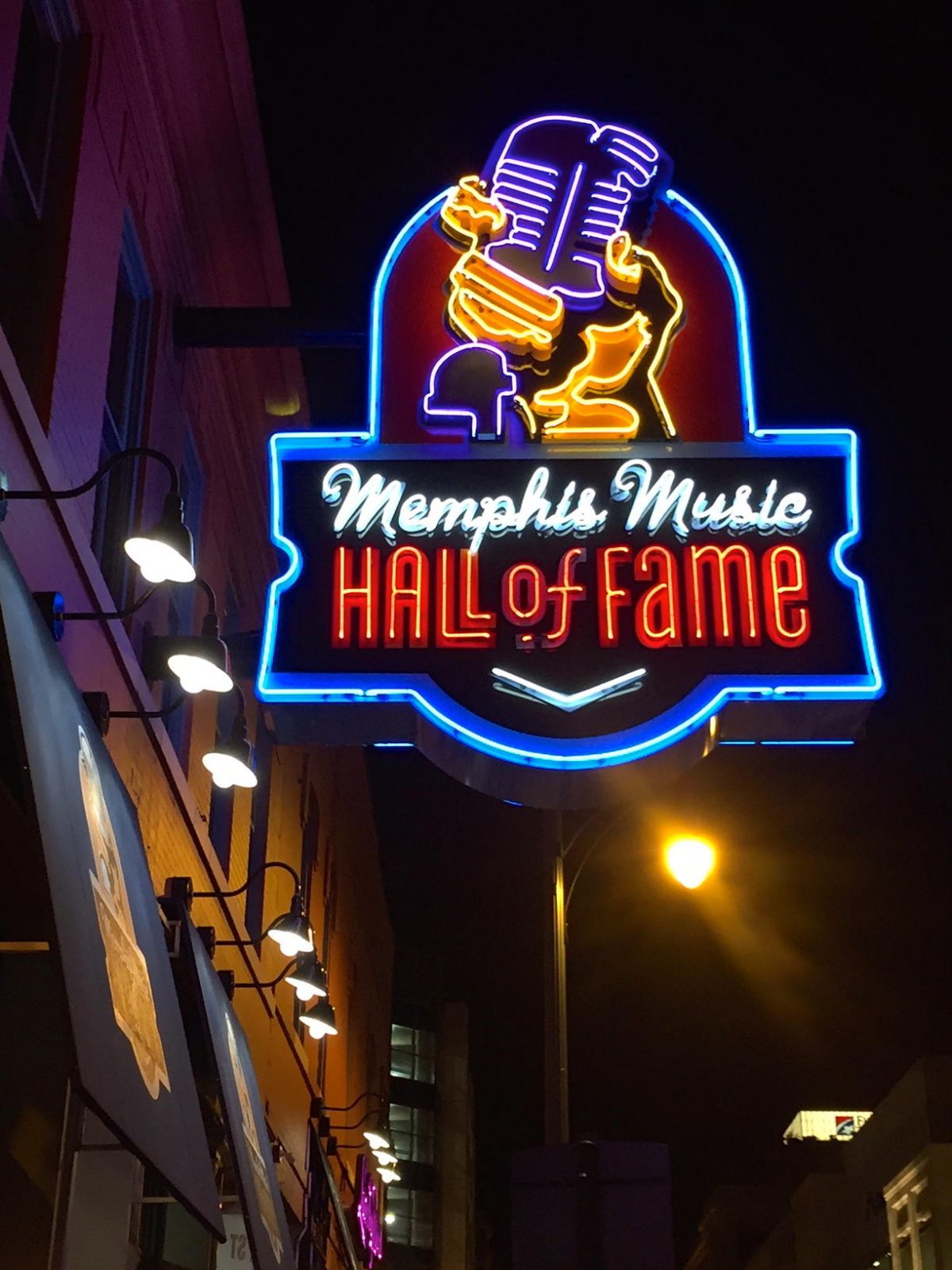
Last night during a reception at the Halloran Centre, the Memphis Music Hall of Fame (MMHOF) announced eight new inductees. The 2022 roster includes Memphis-born blues and jazz saxophonist, composer, arranger, and educator Fred Ford; Grammy-winning producer and engineer Jim Gaines; producer, arranger, songwriter, author and keyboardist Booker T. Jones; onetime American Sound Studios keyboardist and Grammy-winning singer Ronnie Milsap; former chair of Elvis Presley Enterprises Priscilla Presley; Sun Records musician, singer, songwriter, and producer Billy Lee Riley; Grammy-winning singer and Stax Records star Mavis Staples; and Jerry Lee Lewis’ drummer and Sun Records producer J.M. Van Eaton.
“This year’s list is as diverse as Memphis music itself,” John Doyle, Memphis Rock ‘n’ Soul Museum and MMHOF executive director, noted in a statement. “Rock, soul, blues, rockabilly, even country permeate the 2022 roster, with many of these icons still doing what they do … creating music.”
The announcement reception also featured the world premiere of a one-hour television program celebrating the 10th anniversary of the MMHOF, scheduled to air nationally Thursday, March 31st, on the Circle Network.
Bringing the MMHOF’s list of total honorees to 90, the 2022 inductees will be celebrated in a concert and induction ceremony this fall. The Memphis Music Hall of Fame was started in 2012, and is administered by the Smithsonian-developed Memphis Rock ‘n’ Soul Museum. In 2015, the Rock ‘n’ Soul Museum also developed the Memphis Music Hall of Fame Museum, which opened that year in the former Lansky Bros. Clothing Store building. Each year, a local and national Nominating Committee studies the Hall’s current roster, artists considered and recommended over previous years, and a comprehensive catalog of Memphis musicians to discuss and determine each year’s inductees.
“It is difficult,” writes Doyle, “because there are literally hundreds of deserving Memphis musicians yet to be honored, each of whom deserves it, and with new musical candidates emerging annually. Some have more name recognition, Grammys, or records sold, but we maintain, in regards to Memphis’ world-changing musical status, the last inductee honored will be as important as the first inductee honored 10 years ago.”
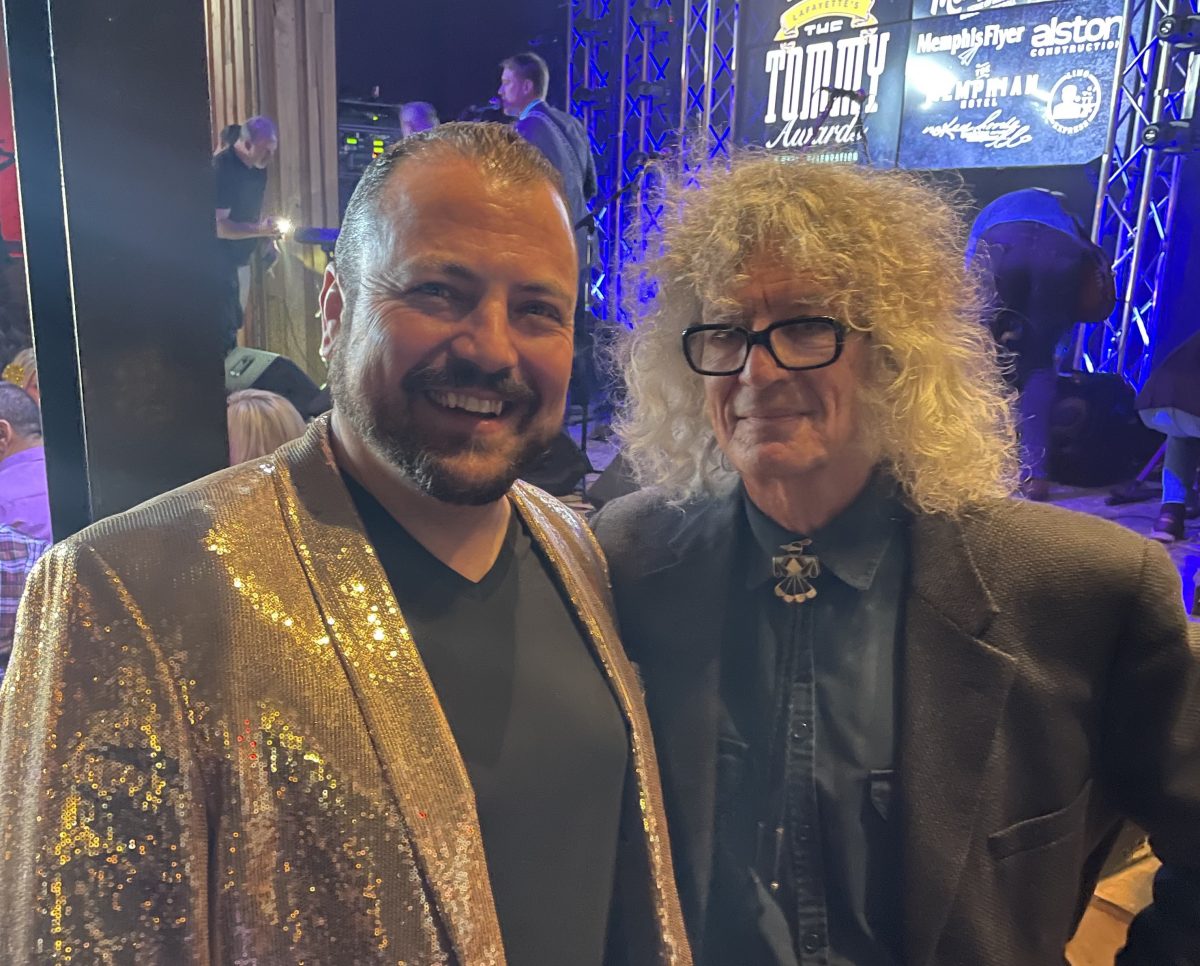
Tommy Peters probably would have vetoed the idea of having an awards show named after him.
The late businessman’s daughter Bethany Peters Stooksberry told me after he died, “He has a brass note on Beale he never wanted to accept. He never wanted to be in the media. He wasn’t very ostentatious.”
But I think Peters would have loved The Tommy Awards, a show honoring local performers, that was held March 20th at Lafayette’s Music Room.
Between 400 and 500 attended the event — a benefit for the Memphis Music Hall of Fame — that featured 15 acts and 22 awards, says Julien Salley, general manager of Lafayette’s, which Peters owned.
The awards show “was Paul Moreau’s idea,” Salley says. “I’m a marketing professional for FedEx now and I’ve been a musician since high school, so, I’ve always been doing both. I’m in three bands: Thumpdaddy, Led Zep’n, and Rock the Boat. I love marketing and I love music. So, the past several years I’ve started merging both passions.”
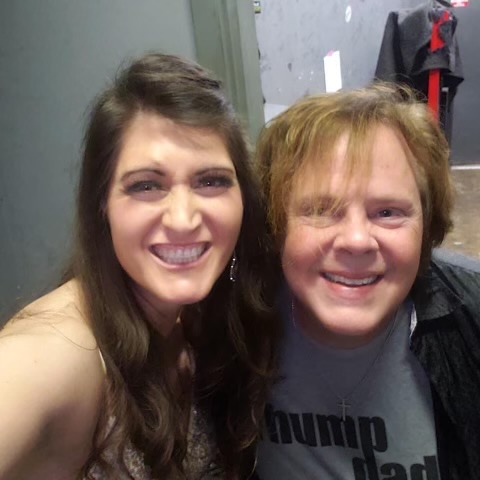
Moreau began doing Merry KISSMAS fundraising concerts two years ago. “We had 12, 15 bands paying nothing but KISS songs.”
He got the idea for the recent awards show after a reading a Facebook post. “A member from one band just made a post on his page out of the blue where he was giving kudos to a guy in another band.”
The post went along the lines of, “I always thought you were good. But you’ve really gone from good to great. And I just want to say that publicly.”
“I read that and it got me to thinking, ‘Hey, there really ought to be a forum, a way for us to celebrate all these hard-working bands in the Mid-South area. They bring so much happiness to others. They have so much talent and work so hard to do it.’”
I thought, “‘Why don’t we celebrate each other together?’ So, I noodled it around a little while. What would really be cool is if we did a Grammy-style awards show.”
He took his idea to Lafayette’s.
“When he came to us, we said, ‘Yes. We’d love to host this awards ceremony,” Salley says. “Paul was showing up at our weekly manager meetings. We were blowing up his phone, email, text. It was constant communication. We partnered with him. Our team and Paul were in non-stop contact for the last three months putting this together.”
“I wasn’t sure what we could call it,” Moreau says. And, he added, “I initially suggested, ‘What if we call it ‘The Julien?’ Like the Oscar.
“I made this silly little image of an Oscar body with Julien’s head on it. But then he kicked it around and he said, ‘You know what would really be cool? If we call the awards ‘The Tommy’ in honor of Tommy Peters, who basically brought Lafayette’s back to life.”
Moreau liked the idea. He’d heard stories of the old Lafayette’s, which opened in 1972 in Overton Square. “I’ve seen pictures from the heyday of Billy Joel and KISS. It must have been a magical place.”
Peters, who died September 5th, 2021, was founder, president, and CEO of Beale Street Blues Company, which includes Lafayette’s Music Room, B. B. King’s Blues Club, and Itta Bena and Moondance restaurants. In Orlando, he owned The Wharf and Lizzie’s BBQ. In Montgomery, Alabama, he owned B. B. King’s Blues Club, Lucille, and Itta Bena in Wind Creek Casino. He also owned B. B. Kings Blues Clubs in the Holland American Cruise Lines.
“Tommy Peters wasn’t your typical leader,” Salley says. “He was a high-energy visionary that led from the front. Every day with him was exciting because we were always after something new. ‘How can we improve our live music program?’ ‘What new opportunities exist in the market?’ ‘What can we do to shake things up in Memphis?’ These were questions he was constantly asking.”
They used a few of the “guitar drop elements” from the Beale Street New Year’s Eve events at The Tommy Awards. These included the Sky Tracker, which flashed lights across the sky. Arriving guests were photographed on the black carpet runway. “Black is a little more rock and roll than a red carpet,” Salley says.
During one point, Loeb Properties president Bob Loeb introduced Peters’s daughters Bethany Peters Stooksberry and Sara Fay Egan, and Peters’s granddaughter, Grace Egan.

“We’re going to continue to carry on my dad’s commitment to Memphis,” Stooksberry said, “and his mission to support these musicians that are in this room tonight and this unique sound that can only be found right here.”
Six Feet Thunder did a tribute to Junior Grant, who recently died. They played Queensryche’s “Silent Lucidity.” That showed “just how united the band community in the Memphis area is,” Moreau says. “It was a beautiful moment.
Shawn Few and Shara Layne Matlock hosted the event.
Salley wore a glittering gold lame jacket, which also has a tie-in to Peters. Years ago, Salley had a Lansky Bros. jacket, which he was wearing the night when he had to break up a fight between two guys at Lafayette’s. One of the men left, but the other tried to fight Salley and also threatened to kill him. “I reached down to ball him up a little bit to drag him out,” Salley says.
That’s when the guy tore Salley’s jacket. “I felt it tear from top to bottom on my back. I was livid.”
The story ended when an undercover policeman arrested the guy and took him away. “Tommy felt sorry for me losing the jacket. The following Monday he shows up with this gold jacket.”
Originally Salley says he thought it was a lot of gold, a bit much. “Elvis, Prince, or the Bar-Kays could get away with wearing it, but not me. We wouldn’t be able to bring the lights down low enough for me to walk around in that thing.”
The Tommy Awards was only the second time he’s worn the jacket. Salley says he wore it to honor Peters.
“I feel like at this point I’ve seen every shape, size, and temperament a boss can have. And Tommy Peters is the best of all of them. It stings that I’ll never be able to repay him for everything he did for me. Every single shift I miss him. The entire team misses him.”


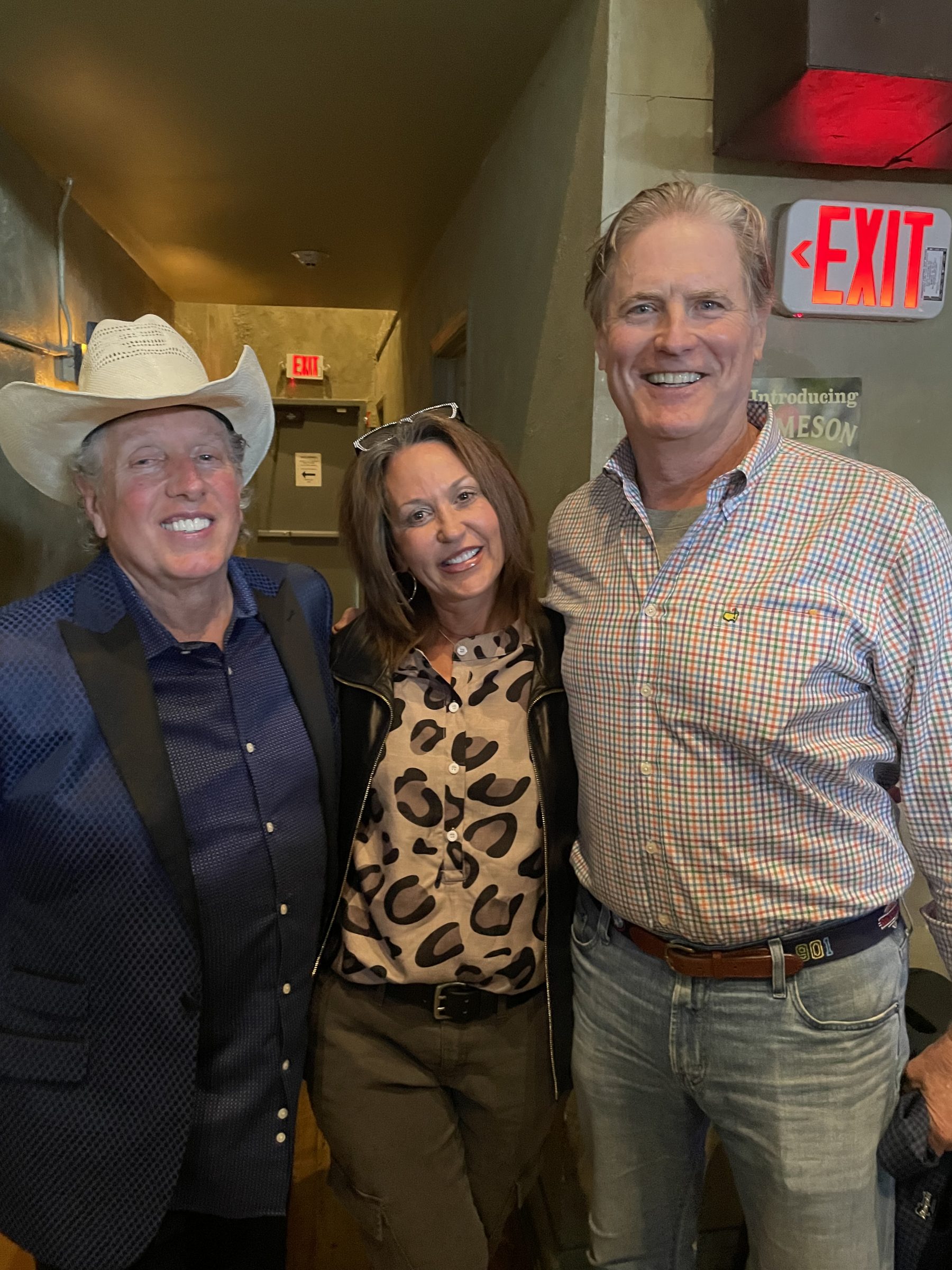
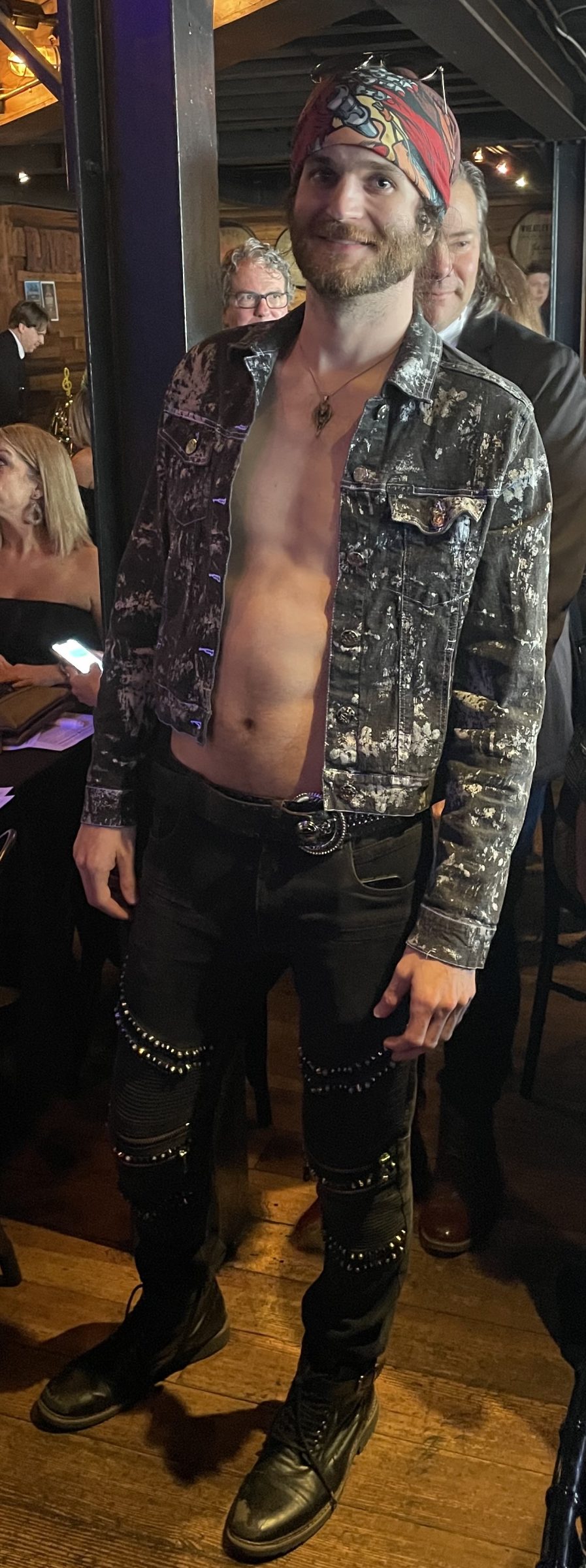




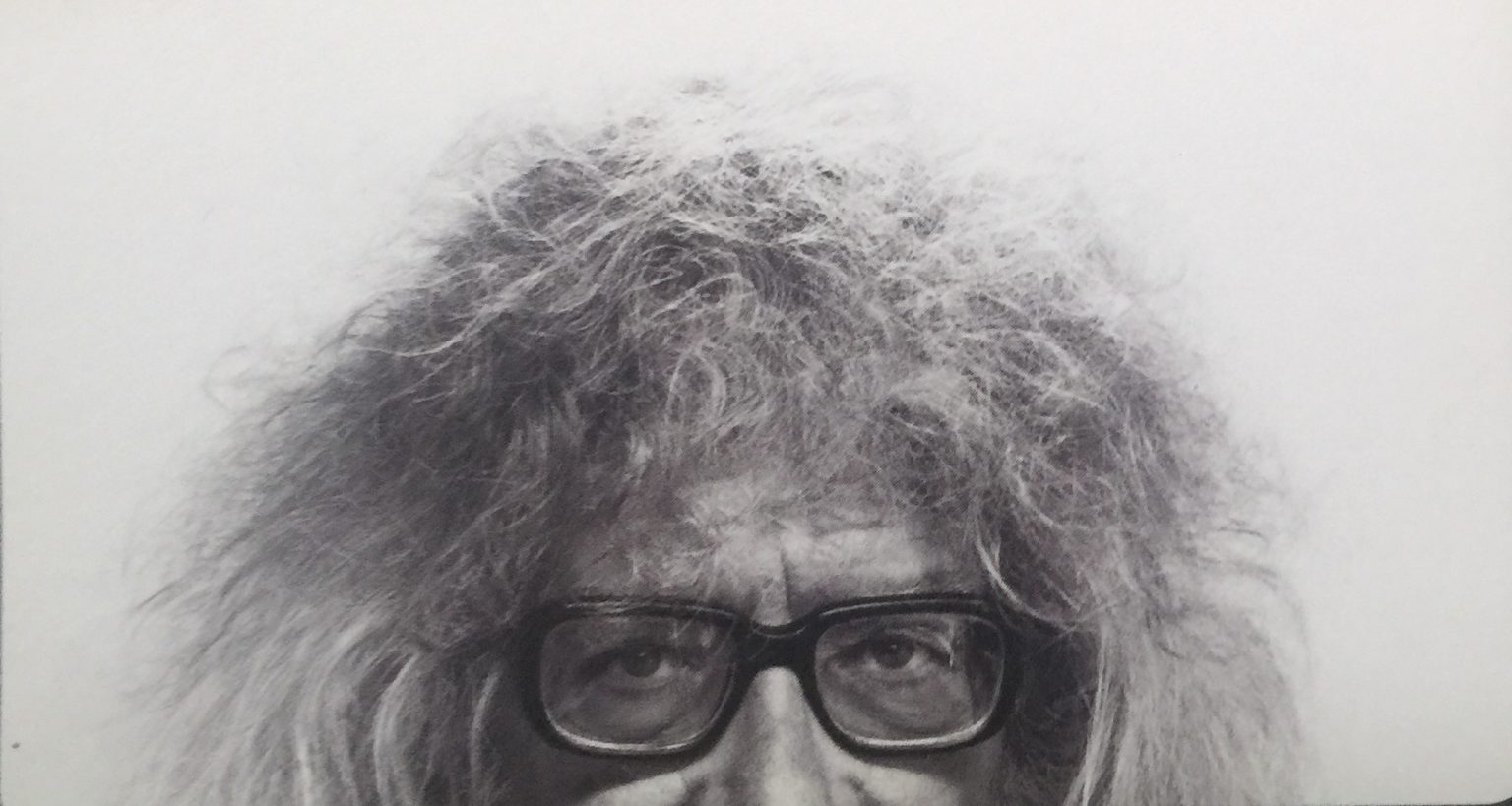

Singer/songwriters are particularly well-suited to live-streaming, and certainly many of our most reliable online performers have been solo artists of that genre who take advantage of the intimacy afforded by streaming devices. This week sees a proliferation of singer/songwriters, with an assortment of such artists at B-Side Memphis on Sunday, and a two nights of appearances by Arlo McKinley, the last artist that John Prine signed to his Oh Boy Records before his death. Of course, there are local standby entertainers as well, from Will Sexton to Richard Wilson, all hoping to transport you with the simplest of ingredients.
ALL TIMES CDT
Thursday, November 4
8 p.m.
Arlo McKinley & full band — at Hernando’s Hide-a-way
Website
9 p.m.
Devil Train — B-Side Memphis
Facebook YouTube Twitch TV
10 p.m.
Velvetina’s Harvest Moon Revue — at Hernando’s Hide-a-way
Website
Friday, November 5
8 p.m.
Arlo McKinley & full band — at Hernando’s Hide-a-way
Website
10 p.m.
The Tennessee Screamers and The Sheiks — at B-Side Memphis
YouTube Twitch TV
Saturday, November 6
10 a.m.
Richard Wilson
Facebook
8 p.m.
Will Sexton — at Hernando’s Hide-a-way
Website
10 p.m.
Vines — at Hernando’s Hide-a-way
Website
Sunday, November 7
3 p.m.
Golden Roses —Chicken $#!+ Bingo at Hernando’s Hide-a-way
Website
3 p.m.
Singer/Songwriter Showcase — at B-Side Memphis
YouTube Twitch TV
10 p.m.
Richard & Anne — at B-Side Memphis
YouTube Twitch TV
Monday, November 8
10 p.m.
Evil Rain — at B-Side Memphis
YouTube Twitch TV
Tuesday, November 9
No live-streamed events scheduled
Wednesday, November 10
5:30 p.m.
Richard Wilson
Facebook
8 p.m.
Riley Downing and Kassi Valazza — at Hernando’s Hide-a-way
Website

Wednesday through Sunday, as of last week, visitors can once again stroll through history at the Memphis Music Hall of Fame (MMHOF). It’s not a trivial matter: Aside from the tourist dollars, the musical inspiration and awareness brought by such museums is inherently valuable to every visitor reached. As Memphians, the heritage embodied here is part of the air we breathe, and deserves to be celebrated.
Perhaps that why MMHOF is throwing in a little extra incentive for locals to visit. Through June, all Shelby County residents can enjoy half-price admission.
And MMHOF is not going it alone. Its companion facility, the Memphis Rock ‘n’ Soul Museum, has been open since May 21st, and The Legendary Sun Studio and Graceland are also taking visitors. The Stax Museum of American Soul Music is slated to reopen on June 18th (with free admission for Shelby County residents every Tuesday afternoon, beginning next month).

Images from the Memphis Music Hall of Fame
Naturally, new guidelines are in place at all of the above. Maximum capacity is severely limited (MMHOF, for example, will only allow six people in the lobby, and a total of 20 in the exhibits, at any given time), temperatures are checked at the door, and masks are either encouraged or required (with Sun Studio offering disposable masks for a dollar each).
Having said that, the musical and historical epiphanies awaiting can still be enjoyed in a relatively controlled environment, in stark contrast to music clubs or sporting events. If the heat is tough to beat, and a little air conditioned culture suits you, don your favorite mask and head over, with caution, to some of the best-curated (not to mention funkiest) exhibits available anywhere.
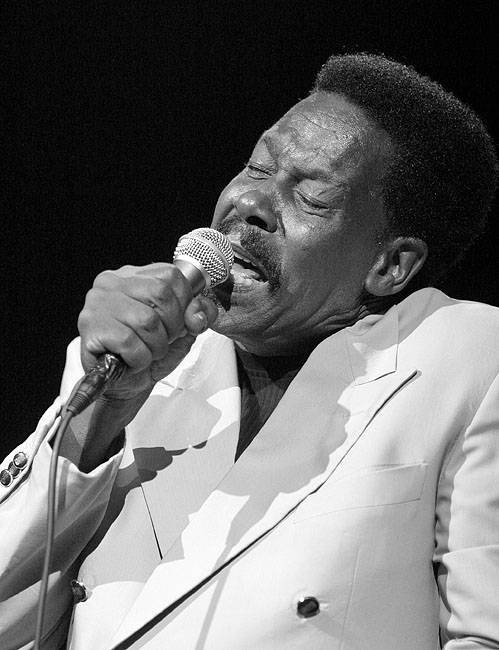
Eddie Floyd
The Memphis Music Hall of Fame just announced this year’s inductees, who officially enter the ranks of honorees at the induction ceremony this November. The Hall of Fame, a nonprofit set up in 2012 and administered by the Memphis Rock N’ Soul Museum, now celebrates the works of over seventy artists or groups, and shows no signs of lacking local talent for future recognition.
This year’s inductees are, as usual, giants in their respective genres. We pay tribute to them here with clips of them working their magic onstage. Towering over them all is the Queen of Soul, Aretha Franklin, who died just last month. She will be paid a special tribute in November’s ceremony, as the Hall of Fame honors a legend who called Memphis her birthplace.
Memphis Music Hall of Fame Announces 2018 Inductees (2)
Another soul giant, Eddie Floyd, will also be inducted this year. The writer and hit performer behind “Knock on Wood” and many other Stax hits, Floyd’s songs were interpreted by nearly every Stax artist. Naturally, not a year has gone by without at least one artist from the label being inducted.
Memphis Music Hall of Fame Announces 2018 Inductees (3)
O’Landa Draper, the Grammy Award-winning gospel singer and director of the Associates Choir, was considered one of the top gospel artists of the 1990s. He too will join the ranks of honorees this year. Though not born in Memphis, Draper moved to Memphis at the age of 13 and attended Overton High School and the University of Memphis.
Memphis Music Hall of Fame Announces 2018 Inductees (4)
At today’s announcement event, there was some light-hearted discussion of whether Draper could be honored in the same program as fellow 2018 inductees, 8 Ball & MJG. They will be, we were assured, but the musical numbers won’t be juxtaposed. The rap duo are on a roll lately, ramping up their live appearances and continuing to drop new albums. (See our recent profile of them below).
Memphis Music Hall of Fame Announces 2018 Inductees (6)
In keeping with the Hall of Fame’s tradition of inducting groups as well as solo artists, the Box Tops were also added this year. With Big Star having been inducted in 2014, this makes for two groups associated with Alex Chilton getting the nod. Could he be recognized as a solo artist in his own right one day? In any case, the announcement also named checked original members Danny Smythe, Bill Cunningham, and Gary Talley, as well as 1968 additions Rick Allen and Thomas Boggs. The fabulous guitar in this video clip was not mentioned by name.
Memphis Music Hall of Fame Announces 2018 Inductees
Another group, arguably far more groundbreaking than the Box Tops, was also recognized: The Rock and Roll Trio, responsible for the groundbreaking “Train Kept A-Rollin'” and other rockabilly masterpieces. Driven by the savvy guitar attack of Paul Burlison, brothers and Memphis natives Dorsey and Johnny Burnette took the world by storm, once upon a time. Here they are from 1956.
Memphis Music Hall of Fame Announces 2018 Inductees (7)
And finally, another legend from the first days of Elvis, who most certainly has not left the building, is George Klein, the pioneering DJ and rock ‘n’ roll television host who was critical to giving regional bands exposure via his programming. He was also an early friend to the King, and had the honor of inducting Elvis into the Rock and Roll Hall of Fame. He’ll be honored with the other performers above (for he, in his own way, was an artist as well) at the induction ceremony, scheduled for November 1st at the Cannon Center. Here’s George sharing a strange moment with the great Sam Phillips.
Memphis Music Hall of Fame Announces 2018 Inductees (5)